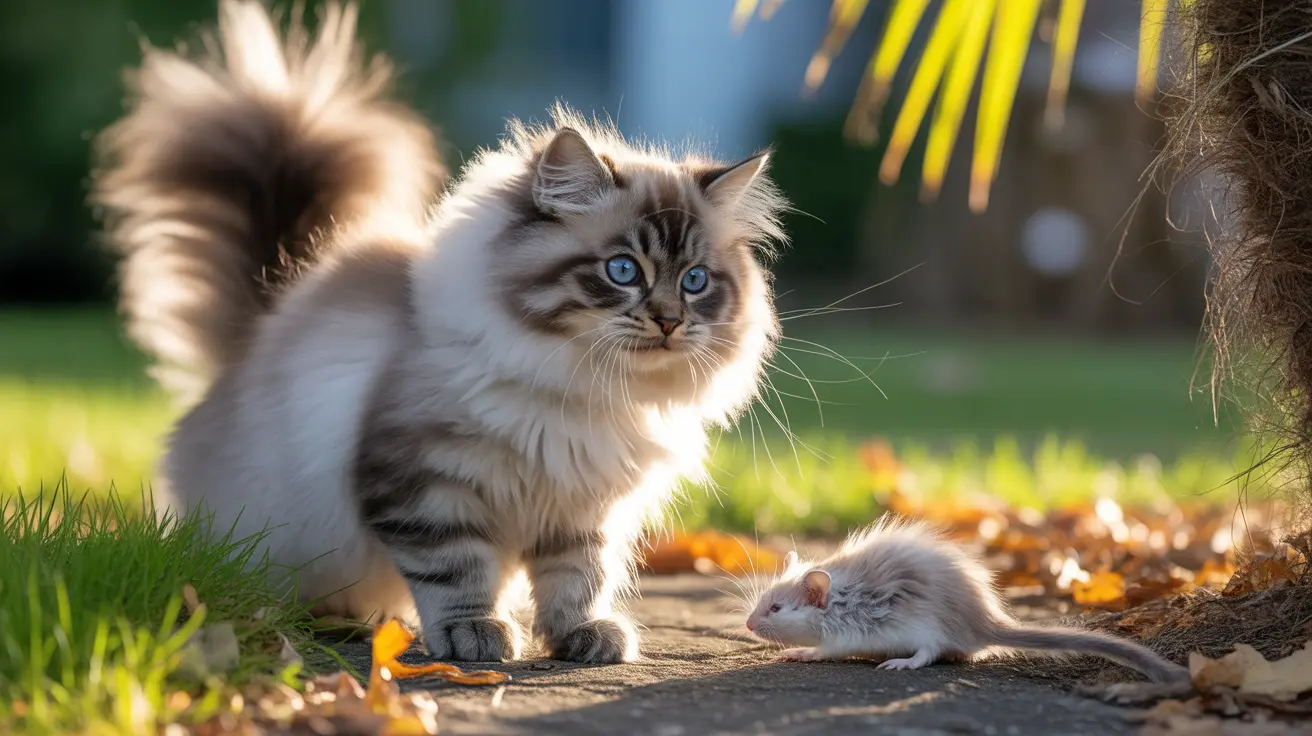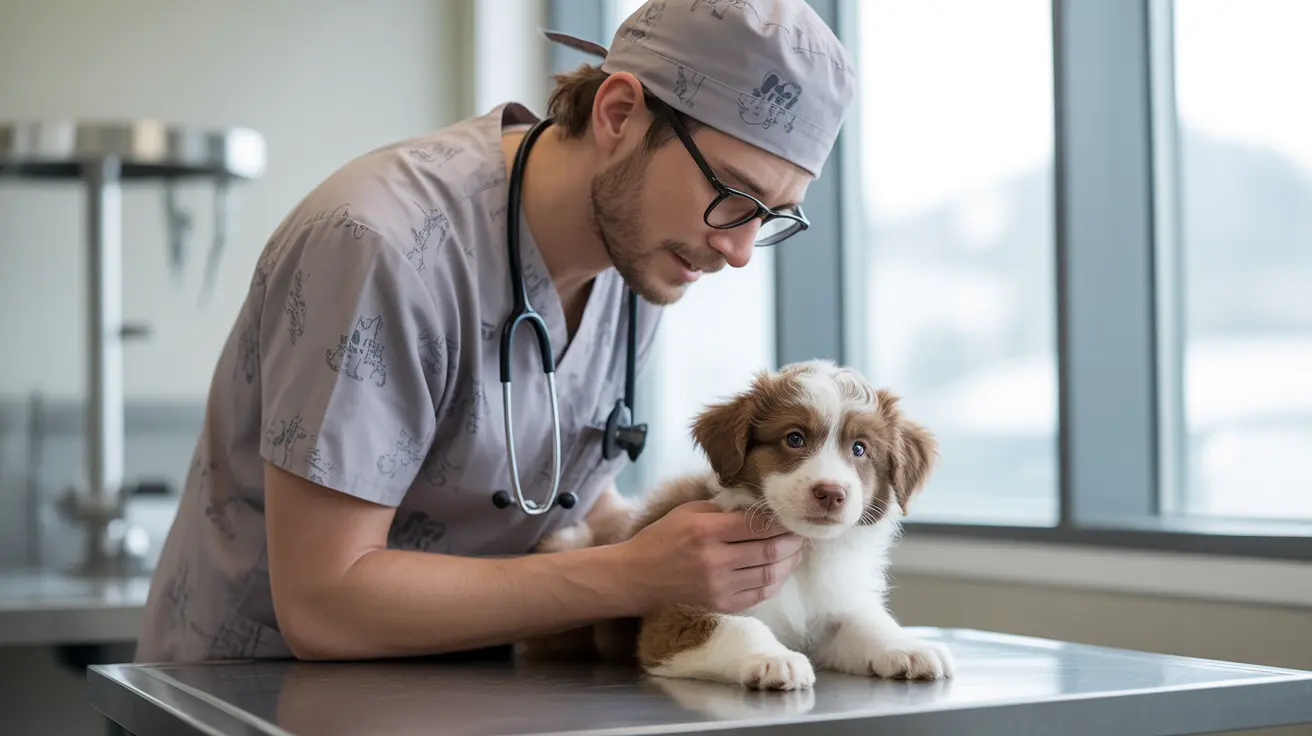Few sounds in the animal kingdom are as iconic and mysterious as a cat's purr. While most cat owners associate this gentle, rhythmic vibration with contentment and happiness, the reality of feline communication through purring is far more intricate and multifaceted than it appears on the surface.
The fascinating world of cat purring encompasses not just expressions of joy but serves as a sophisticated form of communication that can signal everything from distress to healing intentions. This complexity makes understanding pet cats' purring patterns essential for any cat owner seeking to strengthen their cat-human bond.
The Science Behind Cat Purring
The physiological reasons cats purr start in the larynx, where rapid muscle movements create the characteristic vibration we recognize as purring. This process occurs through the coordinated action of the glottis opening and closing at frequencies between 25 and 150 Hz, producing the distinctive purr sound during both inhalation and exhalation. Through this fascinating mechanism, cats generate a sound that not only communicates emotions but may also play a role in their health.
The Healing Properties of Purring
Research in purring science has revealed remarkable benefits, particularly in terms of healing and physical recovery. The specific frequency range of purring has been associated with improved bone density, tissue regeneration, and pain relief. This suggests that cats may instinctively use this mechanism for self-healing, helping them to recover from injuries or illness. Many veterinarians and experts believe that the vibrations produced by purring can stimulate the body’s natural healing processes, making this soothing sound a tool for feline well-being.
Decoding Different Types of Purrs
Contentment and Happiness
The most commonly recognized form of purring occurs during moments of relaxation and pleasure. These cat happiness signs typically manifest when your feline companion is enjoying positive experiences. For example:
- Receiving gentle pets or scratches, which often result in an increase in purring as a sign of trust and enjoyment.
- Lounging in a favorite sunny spot, where the warmth and comfort bring about a relaxed purr.
- Settling into a comfortable lap, conveying a sense of security and deep contentment.
- Engaging in peaceful grooming, a time when cats feel safe and satisfied with their environment.
These behaviors are clear indicators of a joyful and comfortable cat, letting owners know that their companion feels at ease.
Stress and Self-Soothing
Cat calming behaviors, including purring, can also emerge during stressful situations. For instance, a cat may purr at the veterinary clinic or when feeling threatened. This form of purring serves as a self-soothing mechanism, enabling the cat to cope with anxiety or fear. Additionally, these stress-induced purrs can be a way for cats to signal to their owners and other animals that they do not pose a threat and may need support or space. Understanding how and when cats use purring as a self-soothing behavior helps owners recognize when their pets might require comfort and reassurance.
Social Aspects of Purring
The social function of purring plays a crucial role in feline communication, beyond just conveying emotional states. Purring is especially significant in certain social interactions, including:
- Mother-kitten bonding: Kittens and their mothers use purring to communicate well-being and presence. Newborn kittens purr to let their mother know they are healthy and content, while the mother purrs to comfort and calm her young.
- Greeting behaviors: Cats may purr as a friendly gesture when meeting humans or other cats, helping to establish peaceful social interactions.
- Establishing and maintaining social connections: Through purring, cats can reinforce relationships within multi-cat households or with their owners, contributing to harmony and cohesion.
- Requesting attention or care: Sometimes, a cat will purr to get the attention of its owner, indicating a need for food, affection, or assistance.
These social functions illustrate the depth and variety of messages conveyed through purring, demonstrating that it is far more than a simple sign of happiness.
The Role of Purring in Cat-Owner Interaction
Interpreting cat sounds, especially purring, strengthens the cat-owner interaction and deepens mutual understanding. Cat affection signals through purring can vary in intensity and context. It is essential for owners to observe their cats’ body language, such as relaxed posture, kneading, or direct eye contact, alongside purring. This comprehensive observation aids in accurately interpreting what the cat is trying to communicate, ensuring owners respond appropriately to their pet's emotional and physical needs.
Understanding Your Cat's Emotional Signals
Emotional signals conveyed through purring can indicate different internal states. A cat’s purr may express:
- Contentment and joy, showing a relaxed and happy pet.
- Anxiety or stress, signaled by a more urgent or persistent purr, often in unfamiliar or uncomfortable situations.
- Physical discomfort, where purring may serve both as a request for assistance and as a self-healing attempt.
- Social engagement, such as purring when greeting or bonding with humans and other animals.
- Healing attempts, where the purr’s frequency supports the cat’s recovery from illness or injury.
Careful attention to context and additional behaviors, such as changes in appetite, activity, or grooming, can help owners discern what their cat’s purr truly means.
Frequently Asked Questions
- What does it mean when a cat purrs? Cat purring often signals contentment, but can also indicate discomfort or stress, depending on the situation and accompanying behaviors.
- Can purring heal cats? Purring at certain frequencies may promote healing and reduce pain in cats, thanks to the vibrations produced during the act.
- Do all cats purr? Most domestic cats purr, but some wild cats and certain breeds may not possess the same purring capabilities.
- Why do cats purr when sick or injured? Cats may purr to calm themselves and stimulate healing processes when unwell, using their natural vibrations to aid recovery.
- Is purring always a sign of happiness? No, cats can purr when stressed, anxious, or in pain, so context is crucial for interpretation.
- How do cats use purring for communication? Cats use purring to communicate with humans and other cats, often for reassurance, bonding, or requesting care.
- Does purring help build the cat-owner bond? Yes, purring fosters trust and strengthens the unique relationship between humans and their feline companions.
- Can humans interpret the meaning of purrs accurately? Interpreting the meaning of purrs requires observing context, accompanying body language, and familiarity with the individual cat’s behavior patterns.
- Are there different types of purring? Cats may adapt their purrs' tone, frequency, and intensity to suit different situations, such as happiness, anxiety, or social interaction.
- Do kittens purr? Kittens begin purring within days of birth, often to bond with their mother and signal well-being.
Understanding the multifaceted cat purr enhances our ability to care for and connect with our feline companions. By recognizing the various contexts and meanings of purring, we can better respond to our cats' needs and strengthen the unique bond we share with them. Whether expressing joy, seeking comfort, or promoting healing, the cat's purr remains one of nature's most remarkable forms of communication.






